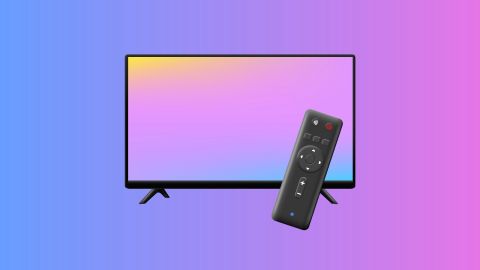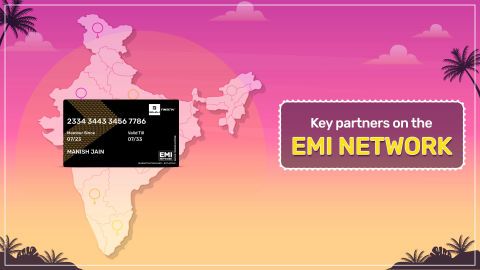NTSC stands for National Television System Committee. It is a video format mainly used in the United States, Canada, Japan, and a few other countries. It operates at 30 frames per second with 525 lines of resolution. NTSC was developed for analogue broadcasting, but you will still find it used in DVD players, gaming consoles, and some CCTV systems. One key advantage of NTSC is its slightly smoother video motion, which works well for sports or fast-moving content. However, its colour stability can vary depending on signal strength, which may affect video quality.
What is PAL
PAL stands for Phase Alternating Line. It is widely used in the UK, India, Australia, Europe, and parts of Asia and Africa. PAL operates at 25 frames per second with 625 lines of resolution. This gives it better picture detail and sharper colour accuracy. It was developed to fix colour distortion issues in NTSC broadcasts. PAL’s colour encoding system changes the phase of every line, which improves image stability. PAL is often preferred for viewing in brightly lit environments and for capturing high-quality stills or slow-motion video. It also handles long video recordings more efficiently due to its colour balance.
Understanding NTSC and PAL video formats
NTSC (National Television System Committee) and PAL (Phase Alternating Line) are two of the most widely used video formats for television broadcasting across the globe. NTSC is primarily used in North America and parts of Japan, operating at 30 frames per second with a resolution of 720x480. On the other hand, PAL is widely adopted in Europe, Africa, and parts of Asia, with a frame rate of 25 frames per second and a higher resolution of 720x576. While NTSC provides smoother motion, PAL offers sharper images with better color accuracy. The choice between NTSC and PAL largely depends on your region, the type of content, and your display equipment. Explore the Samsung TV 32 inch for an enhanced viewing experience with sharp picture quality and smart features.
Differences in frame rate and resolution
NTSC frame rate: NTSC operates at 30 frames per second (fps), which offers smoother motion, especially useful for fast-paced content like sports or action scenes.
PAL frame rate: PAL runs at 25 fps, providing slightly less fluid motion compared to NTSC, but with higher image stability and clarity for static content.
Resolution in NTSC: NTSC typically has a resolution of 720x480, which results in lower image sharpness compared to PAL.
Resolution in PAL: PAL supports a resolution of 720x576, offering a better overall picture quality with more detailed images and accurate colours.
Impact on display quality: While NTSC might be preferred for dynamic content, PAL is the better option for crisp, detailed, and accurate color reproduction in still images and video in 55 inch TV.
Find out more about the LG smart tv 32 inch for a perfect blend of performance and design.
Differences between PAL and NTSC
Here are the main differences between the two formats.
Feature
|
NTSC
|
PAL
|
Full form
|
National Television System Committee
|
Phase Alternating Line
|
Region
|
North America, Japan
|
UK, India, Europe, Asia
|
Frame rate
|
30 frames per second
|
25 frames per second
|
Resolution
|
525 lines
|
625 lines
|
Colour accuracy
|
Can vary
|
More stable
|
Usage
|
Older systems, some gaming consoles
|
Broadcast, CCTV, digital cameras
|
Which format is suitable for different regions?
NTSC in North America: NTSC is the standard video format in North America, including the United States, Canada, and parts of Mexico. It operates at 30 frames per second and is the preferred system for television broadcasting in these regions.
PAL in Europe and Asia: PAL is the dominant video format in Europe, Asia, and several other regions worldwide. It operates at 25 frames per second and is known for offering higher resolution and better color accuracy.
NTSC in Japan: Japan uses NTSC for television broadcasts, offering compatibility with the devices and media formats commonly used in the country.
PAL in Australia and Africa: In countries like Australia and much of Africa, PAL is widely adopted due to its better image quality and compatibility with local broadcasting systems.
Choice based on device compatibility: Always choose the format based on your region's standard to avoid compatibility issues with devices, such as TVs and DVD players.
Discover the stunning features of the LED TV for a superior viewing experience.
Converting between NTSC and PAL
Converting between NTSC and PAL formats is a process that enables the compatibility of video content with different regional broadcasting systems. The conversion process involves changing the frame rate and resolution, as well as adapting the color encoding system to match the specific video standard of a given region.
For instance, when converting NTSC to PAL, the frame rate is reduced from 30 fps to 25 fps, and the resolution is adjusted to fit the PAL standard of 720x576 pixels. The colour information is also altered since NTSC and PAL use different methods of encoding color. NTSC uses a more straightforward encoding system, while PAL uses phase alternating to prevent color distortion and ensure better image quality.
However, converting video between these formats is not always perfect, and some loss in quality may occur, especially when it comes to motion smoothness or color reproduction. To convert NTSC to PAL or vice versa, specialised software or hardware is often required. Some modern TVs and media players have built-in support for both NTSC and PAL formats, allowing them to automatically adjust and play content from either system without any noticeable difference in quality. In some cases, you may need a converter box or DVD player that supports both formats.
Overall, while converting between NTSC and PAL is possible, the choice of format is best determined by your region and the compatibility of your devices.
Check out the Sony TV for impressive picture quality and advanced technology.
Differences in colour encoding in PAL and NTSC
Here are the colour-related differences between both standards:
PAL uses a phase-alternating system to maintain colour accuracy. This ensures stable, consistent colour on most TVs.
NTSC colour can shift slightly depending on the signal strength or weather interference.
PAL is more suited for environments with strong lighting due to its better colour separation.
NTSC may appear warmer in tone but often needs frequent colour tuning.
PAL is ideal for long video playback, such as movies or documentaries.
Get TVs on Easy EMIs with Bajaj Finserv
Bringing home a high-performance TV is now simple with Bajaj Finserv’s flexible financing options and latest offers. Follow these easy steps to buy your preferred TV on Easy EMIs.
Explore models on Bajaj Mall: Browse through a wide range of LED, QLED, OLED, and smart TVs on Bajaj Mall. Compare screen sizes, resolutions, sound quality, and smart features to choose the model that suits your home viewing needs.
Visit a partner store: Once you have shortlisted a model, visit any of Bajaj Finserv’s 1.5 lakh partner stores across 4,000 Indian cities. See the product in person and speak to experts if needed before finalising your purchase.
Choose the Easy EMI Loan option: At checkout, select the Bajaj Finserv Easy EMI Loan. Get financing of up to Rs. 5 lakh and convert your TV purchase into Easy EMIs. Some TV models may also be available with zero down payment.
Check your loan eligibility online: To make your shopping experience smoother, check your pre-approved loan limit by entering your mobile number and OTP. This gives you a clear idea of how much you can borrow before visiting the store.
Use the EMI Network Card for purchases up to Rs. 3 lakh: If you have a Bajaj Finserv EMI Network Card, use it to divide purchases of up to Rs. 3 lakh into monthly instalments—no paperwork, no delays.
TV by brand
TV by features
TV by size
TVs by brands
TVs by budget









